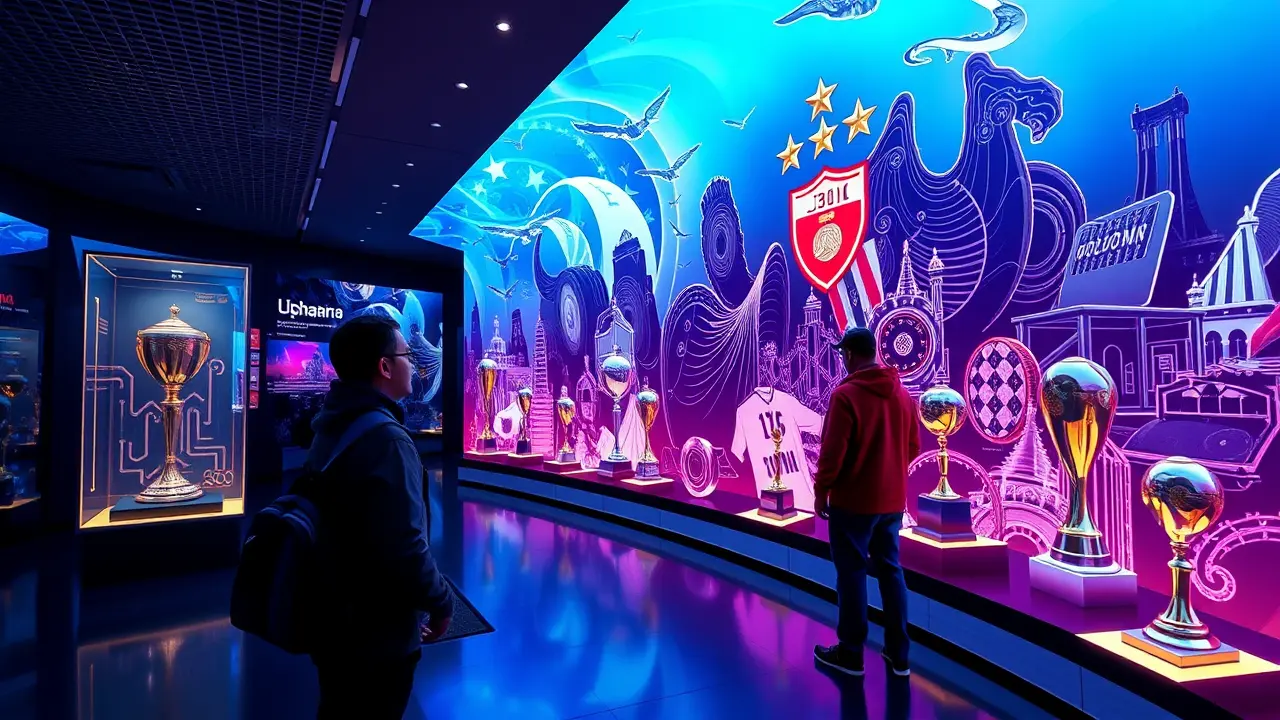Rotenberg visits Dynamo museum, impressed by history and values.
Roman Rotenberg’s recent visit to the Dynamo museum wasn't merely a casual tour by a club director; it was a powerful testament to how sports institutions can masterfully blend historical reverence with cutting-edge technology to inspire future generations. Walking through this meticulously curated space, Rotenberg encountered more than just artifacts—he witnessed the living, breathing soul of Russia's legendary sports movement, where century-old memorabilia from Dynamo's earliest days stands alongside immersive multimedia installations that transform static history into an interactive journey.This museum represents a revolutionary approach to sports heritage preservation, moving far beyond glass-encased jerseys and yellowed photographs to create what essentially functions as a time machine for sporting passion. The strategic inclusion of interactive zones specifically designed to engage young athletes demonstrates Dynamo's forward-thinking commitment to building bridges between eras, allowing today's aspiring champions to virtually shake hands with the ghosts of past legends.What makes this institution particularly remarkable is its architectural and curatorial intelligence—every technological enhancement serves to amplify rather than overshadow the foundational values that made Dynamo formidable: discipline, collectivism, and relentless competitive spirit. The museum's design philosophy seems to consciously reject the notion that tradition and innovation exist in opposition, instead positioning them as complementary forces in sporting excellence.Rotenberg's specific acknowledgment of longtime fan Dmitry Presnya as his guide underscores the crucial role of human connection in this ecosystem—the passionate devotees who serve as living repositories of institutional memory, their personal anecdotes and emotional investments providing the emotional texture that no hologram or touchscreen could replicate. This museum visit carries significant symbolic weight coming from Rotenberg, whose leadership role positions him at the intersection of Dynamo's storied past and its ambitious future.His public endorsement signals an institutional recognition that in modern sports management, cultural stewardship is as critical as tactical formations or transfer strategies. The Dynamo museum now stands as a benchmark for how legendary clubs can leverage their heritage not as nostalgic decoration but as active competitive advantage—forging emotional bonds with new supporters while reinforcing the identity that makes existing fans feel part of something timeless.In an era where player loyalties are increasingly transient and commercial pressures threaten to dilute club identities, this museum represents a bold declaration that some institutions understand their soul is their most valuable asset. The careful preservation of archival materials alongside state-of-the-art exhibition technology creates what analysts might call 'experiential capital'—the intangible value generated when fans don't just learn history but feel it in their bones.For Dynamo, this isn't merely about honoring the past; it's about weaponizing heritage to build a more resilient future, creating what could become Russian sports' equivalent of the Barcelona museum pilgrimage experience. Rotenberg's visible impression with the facility suggests this model of heritage presentation might soon influence how other Russian clubs approach their own historical narratives, potentially sparking a museum arms race where cultural institutions become new battlegrounds for club prestige.The strategic implications are profound—when young recruits visit, they're not just seeing trophies; they're being indoctrinated into a legacy, understanding they wouldn't be joining just a team but becoming custodians of a national institution. This represents sports management at its most sophisticated, where the boardroom recognizes that the emotional architecture of fandom requires as much careful engineering as the financial structures that support player acquisitions. In the final analysis, Rotenberg's museum excursion transcends mere corporate hospitality—it's a masterclass in how elite sports organizations can leverage their past to secure their future, creating cultural gravity that attracts talent and loyalty in equal measure.
It’s quiet here...Start the conversation by leaving the first comment.
© 2025 Outpoll Service LTD. All rights reserved.
